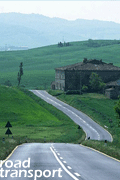Friday, March 14, 2008
Speed limits should promote safe travel, and should be perceived by the public as safe and reasonable. If the public does not understand the consequences of speeding to themselves and others, they are less likely to adjust speeds for traffic and weather conditions, or to comply with posted speed limits. This can place serious strains on the limited resources that are available for speed enforcement and on the relationship between the police and the public. Voluntary compliance with speed limits can also be improved through greater use of speed management devices and techniques that can be built into the existing highway system, as well as incorporated in the Intelligent Transportation System.
Objectives
* Develop speed zoning guidelines with the States and local entities to use in establishing safe and reasonable speed limits on their roadways through a multi-discipline team review of existing speed-setting criteria.
* Work with States and local governments to promote increased use of condition responsive speed and hazard warning systems that give motorists information on appropriate speeds for the prevailing environmental, traffic and roadway conditions.
* Encourage States and local governments to use speed zoning guidelines and, where appropriate, revise posted speed limits to reasonable levels, and/or adopt variable speed limits. Encourage States and local governments to increase the use of physical speed management and perceptual techniques (i.e., speed humps, rumble strips, pavement markings) in locations where speed has been shown to pose a serious hazard. Use of these countermeasures will vary by highway type.
* Encourage States and local governments to consider relevant design factors and design speed prior to changing posted speed limits. Many factors, such as congestion and environment, can impact speed limits.
Objectives
* Develop speed zoning guidelines with the States and local entities to use in establishing safe and reasonable speed limits on their roadways through a multi-discipline team review of existing speed-setting criteria.
* Work with States and local governments to promote increased use of condition responsive speed and hazard warning systems that give motorists information on appropriate speeds for the prevailing environmental, traffic and roadway conditions.
* Encourage States and local governments to use speed zoning guidelines and, where appropriate, revise posted speed limits to reasonable levels, and/or adopt variable speed limits. Encourage States and local governments to increase the use of physical speed management and perceptual techniques (i.e., speed humps, rumble strips, pavement markings) in locations where speed has been shown to pose a serious hazard. Use of these countermeasures will vary by highway type.
* Encourage States and local governments to consider relevant design factors and design speed prior to changing posted speed limits. Many factors, such as congestion and environment, can impact speed limits.
posted by transport blogs
@ 12:19 AM
permanent link | Post a Comment
|
![]()








